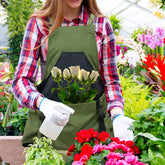What Percentage of Shade Cloth for Garden: A Comprehensive Guide
Table of Contents
- Introduction
- The Importance of Shade Cloth in Gardening
- Understanding Shade Cloth Percentages
- Practical Tips for Selecting and Installing Shade Cloth
- Garden Greenland’s Premium Gardening Products
- Conclusion
- FAQ
Introduction
Did you know that the right shade cloth can significantly enhance your gardening success? As gardeners, we are constantly seeking ways to protect our plants from the harsh effects of sunlight while optimizing their growth potential. Understanding how much shade to provide can be the key differentiator between a thriving garden and a struggling one.
Shade cloths have become invaluable tools for gardeners looking to maintain optimal growing conditions, particularly during the scorching summer months. They serve to shield plants from excessive sunlight, thereby preventing heat stress and sunburn, which can severely impact plant health and yield.
In this blog post, we aim to clarify the complexities surrounding shade cloth percentages, showcasing how to select the appropriate level of shade for various plant types and climates. By the end of our discussion, you'll not only understand what percentage of shade cloth is best suited for your garden but also how to implement it effectively and care for it.
We will navigate through the following key topics:
- The importance and benefits of using shade cloth in gardening.
- An in-depth look at different shade cloth percentages and their applications.
- Factors influencing shade cloth selection, including plant types and climate.
- Practical tips for measuring, installing, and maintaining shade cloth.
- A special focus on how Garden Greenland’s premium gardening products can elevate your gardening experience.
With our expertise and resources, we aim to empower you to create a flourishing garden that remains resilient against environmental stresses. Let’s embark on this journey together!
The Importance of Shade Cloth in Gardening
Protecting Plants from Sun Damage
Plants, like all living organisms, require a delicate balance of light for photosynthesis and growth. However, too much sunlight can lead to detrimental effects, including leaf scorch, reduced growth rates, and even plant death. This is where shade cloth plays a vital role.
By filtering sunlight, shade cloth helps to regulate light exposure, which is particularly crucial during the peak growing season when the sun's intensity can be overwhelming. For example, many shade-loving plants thrive better under a light filter, reducing the risk of sunburn and promoting healthier growth.
Temperature Regulation
In addition to protecting against sun damage, shade cloth is instrumental in regulating temperatures within your garden. During hot summer months, excessive heat can lead to overheating, potentially stunting plant growth. Shade cloth effectively reduces surface temperatures in greenhouses or outdoor gardens, creating a more hospitable environment for plants.
Moreover, during cooler months, shade cloth can help retain warmth, offering insulation against frost damage. This dual functionality makes it a versatile tool throughout the gardening season.
Enhanced Air Circulation
Proper air circulation is essential for healthy plant growth, especially for those grown in greenhouse environments. Shade cloth not only reduces direct sunlight but also allows for increased airflow. This helps to prevent overheating and minimizes the risk of fungal diseases and pests, creating a healthier growing environment.
Water Conservation
Using shade cloth can also lead to improved water efficiency. By reducing evaporation rates, shade cloth helps maintain soil moisture levels, ultimately requiring less frequent watering. This is particularly beneficial in regions that experience high heat and low rainfall, making it an essential tool for sustainable gardening practices.
Understanding Shade Cloth Percentages
What Do Shade Percentages Mean?
The percentage of shade cloth refers to the amount of sunlight that is blocked by the cloth. For instance, a 50% shade cloth blocks 50% of sunlight, allowing the remaining 50% to reach the plants. This percentage is crucial for determining which plants will thrive under specific conditions.
Common Shade Cloth Percentages and Their Uses
- 30% Shade Cloth: Ideal for plants that require moderate sunlight, such as tomatoes, peppers, and some flowering plants. This level of shade is also effective for protecting areas like patios or pools from debris.
- 40% Shade Cloth: This percentage provides sufficient protection for most vegetables and bedding plants. It’s particularly useful for crops like basil, lettuce, and petunias, helping to prevent sunburn.
- 50% Shade Cloth: A versatile choice that works well for a variety of plants, including heat-sensitive vegetables and flowering plants. It is commonly used in residential gardens, providing a pleasant backyard shade while still allowing adequate light for growth.
- 60% Shade Cloth: This is perfect for shade-loving plants like ferns, orchids, and certain leafy greens. It creates a more subdued light environment while still promoting healthy growth.
- 70% Shade Cloth: Used primarily for delicate plants that require low light, such as certain herbs and some varieties of vegetables. It is also effective in extremely hot climates.
- 80%-90% Shade Cloth: This level of shade is suitable for plants that thrive in almost complete darkness, like mushrooms and certain ornamentals. It is also used for livestock shading and privacy fencing.
Choosing the Right Percentage for Your Garden
The optimal shade percentage will depend on various factors, including local climate conditions, the orientation of your garden, and the specific needs of your plants. As a general rule, a good starting point for most mixed-use gardens is 30%-50% shade cloth. However, it’s essential to consider the unique requirements of your specific plants.
Climate Considerations
When choosing shade cloth, consider whether you live in a cooler or warmer climate. For instance, regions with high temperatures and intense sunlight may benefit from higher percentages of shade cloth to protect sensitive plants. Conversely, in cooler climates, lower percentages may be adequate to ensure plants receive enough sunlight for photosynthesis.
Practical Tips for Selecting and Installing Shade Cloth
Factors to Consider When Choosing Shade Cloth
- Plant Needs: Assess the light requirements of the plants you intend to grow. Referencing the shade percentages outlined earlier can help guide your decision.
- Climate: Consider your local climate, including seasonal temperature fluctuations and sunlight intensity. Adjust your shade cloth choice accordingly.
- Material: Shade cloth is available in various materials, including knitted and woven fabrics. Knitted shade cloth is lightweight and allows for greater air circulation, while woven fabrics tend to offer better UV protection.
- Color: The color of the shade cloth can impact its performance. Black cloth absorbs heat, while white cloth reflects it, potentially keeping the growing area cooler. Choose based on your specific gardening needs.
Measuring for Shade Cloth
To determine the correct size of shade cloth for your garden or greenhouse, follow these steps:
- Measure Your Space: Take accurate measurements of the area you wish to cover, including the length and width.
- Add Extra Material: It’s advisable to purchase a slightly larger piece of shade cloth to ensure full coverage. You can always trim excess material to fit your space.
Installation Tips
- Securely Attach: Use clips, bungee cords, or zip ties to secure the cloth to your structure. Ensure that the cloth is taut to prevent sagging.
- Trim Excess: After installation, trim any excess material to keep the area looking neat and professional.
- Regular Maintenance: Periodically inspect your shade cloth for wear and tear. Clean it with mild soap and water to remove dirt and debris, ensuring it remains effective.
Garden Greenland’s Premium Gardening Products
At Garden Greenland, we believe that every gardener deserves access to high-quality, innovative gardening essentials that enhance their experience. Our shade cloth products come in various densities, materials, and colors, tailored to meet the diverse needs of our customers.
By utilizing our premium gardening supplies, you can ensure that your plants not only thrive but also contribute to a sustainable and beautiful garden space. Whether you are looking for Garden Equipment or Garden Tools, we have everything you need to create an optimal growing environment. Explore our Garden Tools Collection here and discover how our products can support your gardening journey.
Conclusion
Understanding what percentage of shade cloth for your garden can make a world of difference in your plants’ health and productivity. By considering the unique light needs of your plants, local climate conditions, and the various shade cloth options available, you can create an environment that promotes growth and resilience.
From protecting delicate seedlings to ensuring optimal conditions for mature plants, shade cloth is an essential tool in the modern gardener’s toolkit. By investing in high-quality shade cloth and applying the tips outlined in this post, you can cultivate a thriving garden that flourishes year-round.
We invite you to explore our full range of gardening products at Garden Greenland, where quality meets performance. Together, we can empower your gardening journey!
FAQ
1. What shade cloth percentage is best for tomatoes?
Tomatoes generally thrive with 30-40% shade cloth, which provides protection from excessive sunlight while allowing enough light for growth.
2. Can shade cloth be used in winter?
Yes, shade cloth can be used in winter to protect plants from frost while still allowing sunlight to reach them.
3. How do I maintain my shade cloth?
Regular cleaning, inspecting for damage, and proper storage are crucial for maintaining shade cloth. Clean it at least once a year and replace or repair any damaged sections promptly.
4. Is it necessary to remove shade cloth during the rainy season?
Typically, shade cloth does not need to be removed during rain, but if you anticipate heavy snowfall, it’s wise to remove it to prevent damage.
5. How long does shade cloth last?
With proper care, quality shade cloth can last up to 10-15 years, depending on usage and environmental conditions.
For more insights and products, check out our Garden Buildings Collection here and enhance your gardening experience today!









